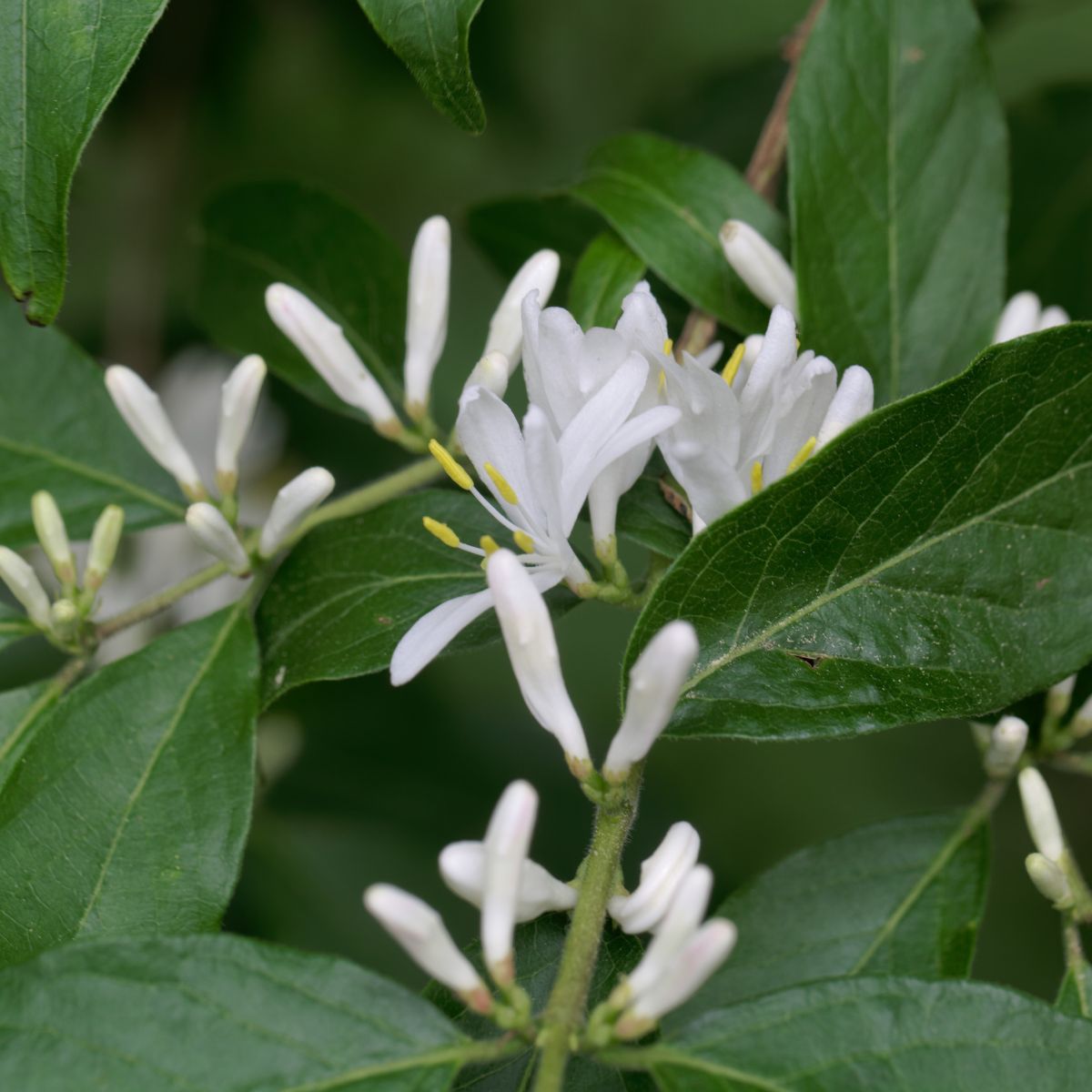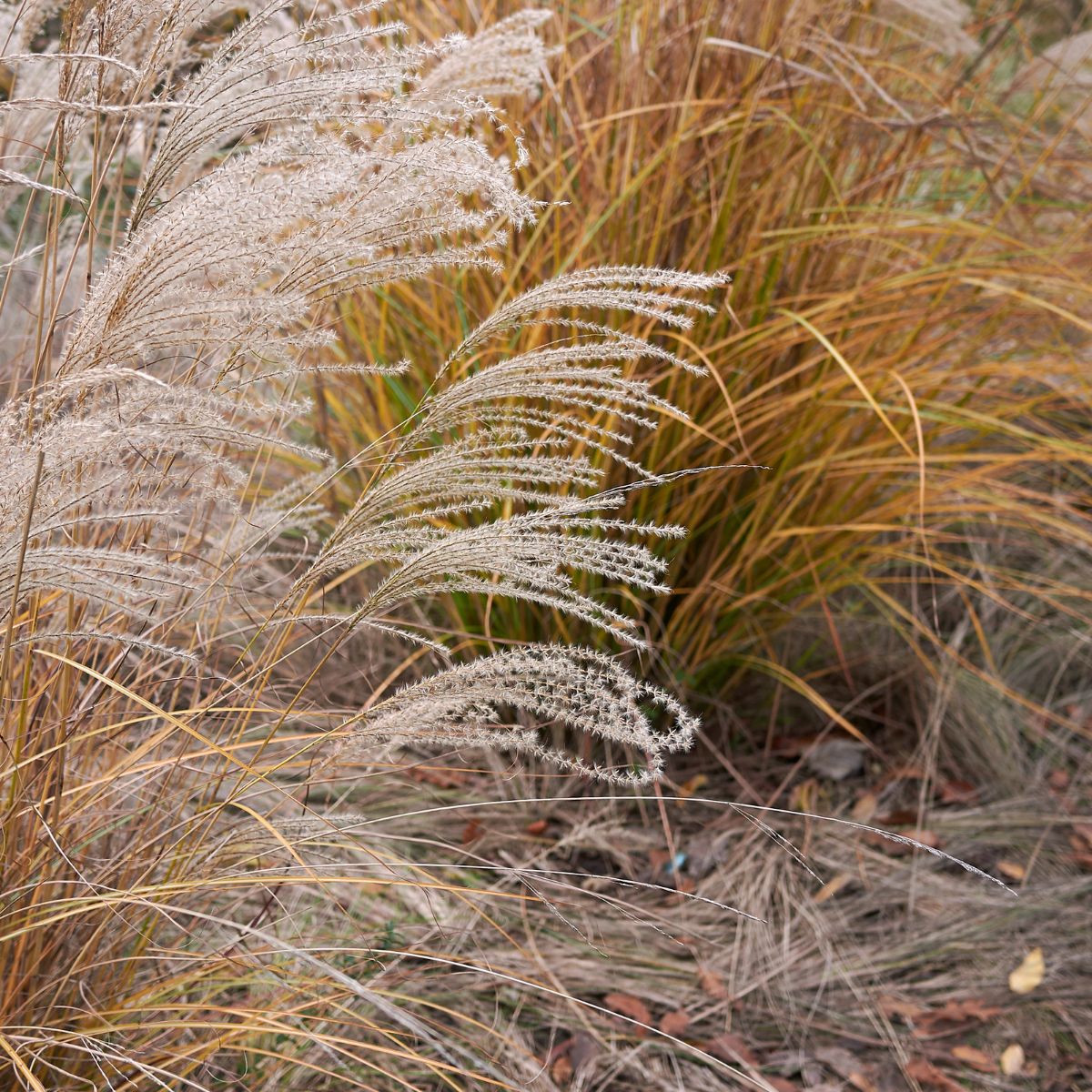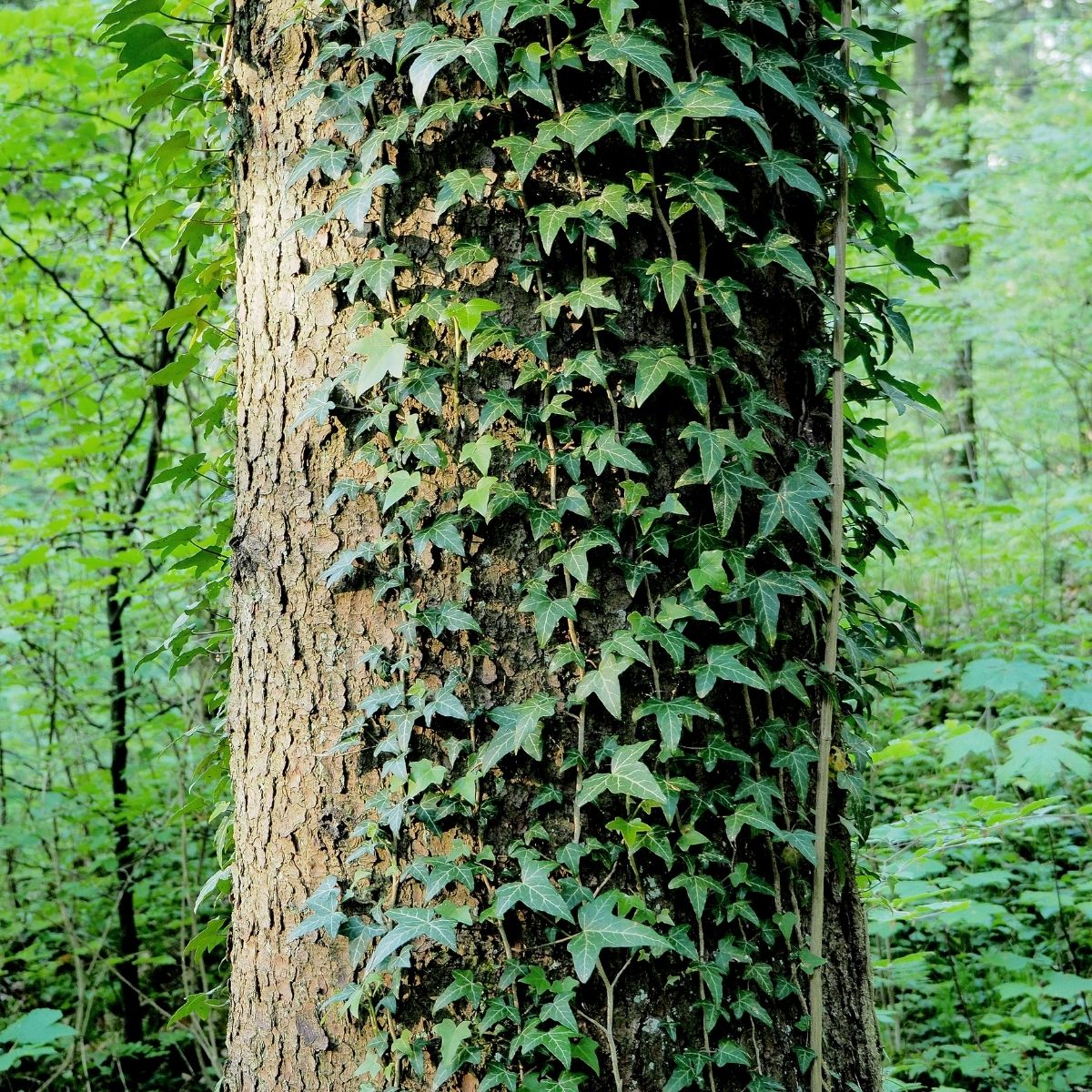About one-fourth of the approximately 2,300 plants growing wild in Indiana are nonnative. While not all non-native plants are invasive, those that have earned the title can cause significant damage to local ecosystems. Some invasive plants are still sold by garden centers and nurseries, while others may have been planted in your landscape before they were known to be invasive, or spread there through natural means. To help you support native habitat by fighting noxious weeds, I have compiled a list of some of the worst and most common invasive plants in Indiana gardens, as well as similar native alternatives for each.

Not sure what plants are best for your IN garden? These native Indiana plants are easy to grow and beautiful too!
Invasive Plants in Indiana Gardens
1. Asian bittersweet (Celastrus orbiculatus)

A woody, deciduous vine, Asian bittersweet may be most easily identified in the fall by its yellow, papery seed capsules that split open to reveal vibrant, red-orange fruits. The glossy, ovate leaves have pointed tips and grow alternately, and clusters of small, greenish flowers precede the fruit.
Pulling or cutting may be effective but will likely require repeated efforts. Foliar, basal, and cut stump herbicide applications are also recommended control methods.
Plant American bittersweet (C. americana) purchased from a reputable source or another native vine like crossvine (Bignonia capreolata).
2. Asian bush honeysuckle (Lonicera maackii, L. morrowii, L. tatarica, L. x bella)

Asian bush honeysuckles have arching branches and grow six to 15 feet tall. Their dark green, ovate leaves are among the first to appear in spring and last to fall in autumn. The classic tubular flowers can be white or pink, depending on the species, and are followed by orange to red berries.
Mechanical control methods include pulling or repeated cutting, ideally before fruits appear. Herbicides are also effective.
Similar native shrubs include northern bush honeysuckle (Diervilla lonicera) and southern arrowwood (Viburnum dentatum).
3. Burning bush (Euonymus alatus)

A large deciduous shrub, burning bush gets its name from the fiery hue its foliage takes on in the fall. It has winged stems, green flowers, and small, oval, opposite leaves with finely serrated margins.
To control, pull seedlings and saplings, cut to the ground and return to cut resprouts, or carefully apply herbicide. Plant native shrubs instead, like blackhaw (Viburnum prunifolium) or highbush blueberry (Vaccinium corymbosum), which has the added bonus of producing edible berries.
4. Callery pear (Pyrus calleryana)

Callery pear is a deciduous tree reaching 30 feet tall. It has shiny, ovate, alternate leaves with wavy, finely serrated margins. The white, five-petaled flowers bloom in dense clusters and give off an unpleasant odor, and they are followed by small, brown, round fruits.
Pull seedlings, use basal herbicide application on saplings, cut larger trees and apply herbicide to the stumps.
Beautiful native flowering trees to plant instead include redbud (Cercis canadensis) and pagoda dogwood (Cornus alternifolia).
5. Chinese maiden grass (Miscanthus sinensis)

A popular ornamental grass, Chinese maiden grass grows up to eight feet tall. The long blades of this perennial have a silver midrib, and the silvery-plumed flower spikes grow eight to 10 inches long and last into winter.
Due to the perennial root crown, careful application of foliar herbicide may be the most effective control method. Plant native grasses instead, such as prairie dropseed (Sporobolus heterolepsis) or little bluestem (Schizachyrium scoparium).
6. English ivy (Hedera helix)

This classic evergreen vine has shiny, alternate, dark green leaves with white veins and up to five lobes. English ivy produces small, greenish flowers followed by dark purple berries.
Repeated pulling or cutting may be effective on small infestations. Well-established plants may require foliar, basal, or cut stump herbicide application.
Grow native vines and groundcovers instead, like Virginia creeper (Parthenocissus quinquefolia) or wild ginger (Asarum canadense).
7. Irish ivy (Hedera hibernica)

Similar to English ivy, Irish ivy features glossy, dark green leaves with pale veins on long, climbing vines. The foliage on young plants has three to five lobes, while older growth often has leaves without lobes. Inconspicuous greenish flowers precede blue-black berries.
Pull, cut, or mow young plants, monitoring in case repeated treatment is necessary. Use basal, foliar, or cut stump herbicide on older plants.
Native alternatives include Allegheny spurge (Pachysandra procumbens) and golden ragwort (Packera aurea).
8. Japanese barberry (Berberis thunbergii)

Japanese barberry is a small, deciduous shrub with small, round leaves growing in tight clusters. It produces clusters of two to four yellow, umbrella-shaped blossoms, followed by bright red, oval berries.
Pull, graze with goats or sheep, or use foliar or cut stump herbicide to control.
Plant American barberry (B. canadensis) instead, or a similar shrub, like New Jersey tea (Ceanothus americanus).
9. Japanese honeysuckle (Lonicera japonica)

Japanese honeysuckle is a semi-evergreen vine with pubescent, red to brown young stems and woody mature stems. It has small, opposite, oval leaves, and the white, tubular flowers turn yellow as they age. Dark purple berries appear in fall.
Effective control methods include pulling, goat grazing, and herbicide application.
Plant native trumpet honeysuckle (L. sempervirens) instead, or another native vine, like trumpet creeper (Campsis radicans).
10. Japanese knotweed (Reynoutria japonica, syn. Fallopia japonica, Polygonum cuspidatum)

An herbaceous perennial, Japanese knotweed has hollow, bamboo-like stems that can reach 10 feet high. It has alternate, triangular to egg-shaped leaves and tiny, pale summer flowers followed by small, winged, triangular fruits.
Use foliar herbicide or cut large plants and apply herbicide to the stumps.
Nannyberry (Viburnum lentago) and goatsbeard (Aruncus dioicus) make excellent native alternatives.
11. Jetbead (Rhodotypos scandens)

A deciduous shrub, jetbead has opposite leaves with deep veins and strongly serrated margins. The white, two-inch flowers have four petals and yellow centers, and clusters of one to four black berries follow.
Pull small plants by hand, and use basal bark, cut stump, or foliar herbicide on larger shrubs.
Similar native shrubs that you can grow instead include silky dogwood (Cornus amomum) and black chokeberry (Aronia melanocarpa).
12. Norway maple (Acer platanoides)

This invasive maple is unfortunately a popular yard tree. Norway maple has opposite, palmate, green to purple leaves with five to seven lobes. The leaf petioles contain a milky sap, and the paired winged seeds have a wide spread.
Pull seedlings and cut larger trees, applying herbicide to the stump. Especially for large specimens or tight spaces, you may want to have a professional remove the tree for you.
Plant native maples instead, like red maple (Acer rubrum) or sugar maple (Acer saccharum).
13. Periwinkle (Vinca minor)

An evergreen trailing vine, periwinkle creates a carpet of small, leathery, opposite leaves with pale veins and pointed tips. Solitary, five-lobed, purple flowers bloom in spring.
Use foliar herbicide to control. Mowing immediately before spraying increases the effectiveness of the treatment.
Creeping phlox (Phlox stolonifera) is a very similar native evergreen groundcover, and kinnikinnick (Arctostaphylos uva-ursi) also provides a good alternative, with the added bonus of ornamental berries.
14. Privet (Ligustrum obtusifolium, L. vulgare)

Commonly used in hedges, privet is a shrub with opposite, elliptic leaves with a blunt tip and tapering, nearly stemless base. The small, white, tubular flowers grow in terminal racemes and are followed by black berries.
Pull seedlings or graze with goats or sheep. Large shrubs and broad infestations may be better controlled with herbicides.
Alternative native shrubs include grey dogwood (Cornus racemosa) and red osier dogwood (C. sericea).
15. Sweet autumn clematis (Clematis terniflora)

Sweet autumn clematis is a popular flowering climbing vine. It has opposite, pinnately compound leaves with smooth leaflets and produces masses of white, starry flowers in fall. The seeds that follow are fluffy and featherlike.
A combination of control methods will provide the best results, including pulling, cutting, and herbicide use.
Plant native virgin’s bower (C. virginiana) or leatherflower (C. viorna) instead.
16. Wintercreeper (Euonymus fortunei)

Wintercreeper is an evergreen vine that may form dense groundcover, appear as a low shrub, or climb up to 70 feet high. Its narrow stems have abundant rootlets and shiny, dark green, ovate leaves with silvery veins and toothed margins. Inconspicuous flowers bloom on a long stalk, and in fall, pink or red fruits split to reveal fleshy, orange seeds.
Repeated cutting is effective for control, especially when paired with herbicide use.
Plant a native groundcover instead, such as wild strawberry (Fragaria virginiana) or striped cream violets (Viola striata).
Now that you can identify some of the most common invasive garden plants in Indiana, take a walk through your garden and note any plants from this list that you recognize. Carefully remove the invasive weed, then replace it with one of the many beautiful native plants mentioned above. It may not seem like much, but you’re helping to nurture native habitat!



















